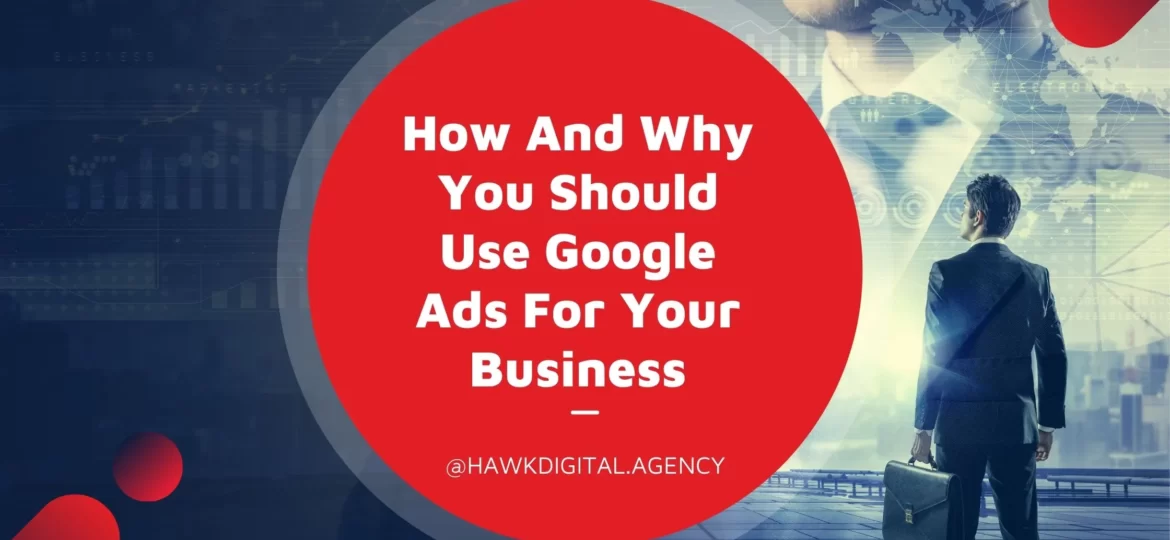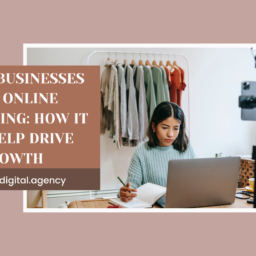
How and Why You Should Use Google Ads for Your Business
In the year 2000, just two years after the search engine, Google AdWords was launched. It acts as a strategy of pay-per-click ads targeting digital customers. The site was rebranded as Google Advertising in 2018. How and Why You Should Use Google Ads for Your Business,
Although the Google market is rife with possible leads, it is a competitive place because of its success. At the end of 2019, 90 percent of the internet population watch advertisements on the site. And, the expense of keywords is rising, making these campaigns more costly. This shift has led to concerns such as, “what can I do to avoid overspending and still meet the demands of an oversaturated market?”
With company owners making their mark, Google Advertising could be deluged, but there are ways yet to be conquered. The video is a prime example of an untapped opportunity with a lot of potential for development.
Let’s take a closer look at the forms in which videos feature Google Advertising and how to make them work for you.
Understanding Google Ads for Video
Accurate View advertisements are the most widely used YouTube video ads, and they come in three formats.
In-Stream: An in-stream ad plays during a YouTube video stream, as the title indicates. The video host also referred to as a YouTube affiliate, offers to play advertisements in exchange for monetary reward. At the beginning, middle, or end of the stream, they usually appear. In-stream advertisements are useful because, after five seconds, they allow the user the opportunity to skip the ad and return to their video. Unlike other PPC advertising forms, these advertisements don’t charge you until a consumer watches your ad for 30 seconds or longer.
In-Search: In-search advertisements are tied to keywords, unlike in-stream advertising. Your ad appears in the results window while a YouTube user looks for your keyword. If you click on the ad video, you’re paying for it. This strategy lacks the five-second skip rule’s safety net but has merits of its own. For starters, whether a search word presents it, the ad is more likely to hit its intended audience.
In-Display: Ultimately, in-display advertisements are the ones that appear in the results of the sidebar or scan. They are labelled with an “ad” indicator. You are paid for the ad after you have clicked. These commercials are instrumental, meaning that the audience wanted to see the content. Unlike most self-populating ad types, the viewer chose this ad of his own will.
A fourth option used to be available, and it offered the viewer the choice of three ads to watch during a video of 10 or more minutes. That format has been retired in favour of the alternative True View styles.
Connecting Your Ads to Video
You need a Google and YouTube account before you continue with the intricacies of linking ads to video streaming. Create your Google Ads account after you’ve set it up. Now, with these quick moves, you are ready to get linked and launch your campaign:
Accounts for Connect
Pick the configuration option from your Google Advertising page and continue to connect to your accounts. One of the choices mentioned in the account panel should be YouTube. You can pick the ones important to your ad if you have several YouTube channels.
Creating and specifying Campaign Terms
“Select “campaigns,” “ad campaign,” and then “video” from the Advertising screen. The tool asks you to specify whether the video will increase market recognition or brand consideration. Offer it a title after a campaign is chosen, and decide how much you’ll pay every day. You’re supposed to determine the campaign conditions:
- Release and closing date
- The script and countries in which to broadcast
- If in-search, in-stream, or in-display of the video
- The bidding technique
An appearance routine
The benefit of this marketing strategy is that the preferences and desires target the viewers. Under the “people” tab, this overview occurs and helps you to zone in on your target customers through:
- Age
- Gender
- Family-size
- Income
- Life event celebrations
- Interests or closeness
- Previous connections
- Common preferences
- Habits
You can now pick your preferred audience’s placement by clicking on the websites or YouTube platforms you want your ad to run on. a can also choose keywords and groups specific to the target audience.
Your Ad Run and Track
With the processes of ad development complete, all that is left to do is publish and retain. Reports of ad metrics will show you your ad’s success and where it needs to be changed.
5 Tips for Successful Video Google Ads
Here are five tips for a good campaign now that you know how Google advertising and YouTube work together:
Make an Ad People Want to See
Instead of making an ad, the clients don’t mind pausing a video to design an ad they want to watch from beginning to end. Remember the group you are addressing and the videos they are drawn to. Having the viewers forget it’s an ad is the secret to a good video ad.
A creative means of highlighting a brand and decreasing its appearance as an ad turns it into something entertaining. For starters, you might be tempted to make a commercial-style ad if you were a shoe manufacturer introducing a new sneaker. Instead, why not reveal something they’ve seen to fans, and craft the ad as a video how-to for running?
Show Real Consumer Opinions
Before buying a product or service, nine out of ten customers read feedback. Before doing things for ourselves, it has been second nature to see what others are doing. As a marketer, using actual consumer opinions in your video ad will benefit from this reality.
The Hello Fresh video campaign from 2017, which features a couple called Tre and Rich, is an example. The video opens with Tre describing why she began using the program and how their home profits. This form of messaging is relatable and evokes an emotional reaction, two things in a commercial equivalent to success.
Keep It Short and Sweet
For advertisements running in the middle of another recording, this is a constructive tip. You’re attracting the attention of the user from the initial link they clicked on. Keeping the content short and sweet raises the probability of a viewer, making it run to completion. As a guide, you can try to keep your advertisements going for 12 to 20 seconds.
Research Before You Write
For a good video ad campaign; knowing what the target audience needs to see is essential. Study what YouTube commercials are doing well in your industry and what sorts of videos they show.
You may also explicitly ask the viewers what kind of commercials they would like to see and when. To collect Intel, use a poll in your social media feed or send out an incentivized email survey.
Draw Inspiration from Past Content
A conducted your research; you know your audience. To show it, you probably have plenty of content already shared to blogs and social media feeds. Instead of starting from scratch to create brand-new advertisements, build on the inspiration of previous content. A smart way to give your viewers something that you already know was a success is to repurpose your material to make something new as a video.
Overcome Google Ad Traffic Jams with Video
They call it the highway of knowledge, so it is no wonder that digital marketing feels like rush hour driving. Sixty-three percent of users say they will gladly click on a PPC ad, but Google Advertising is undoubtedly a desirable path to take compared to organic search.
There could not be a reprieve for vehicles stranded at 5 p.m. A road jam, but advertisers are much luckier. In a less congested area, video marketing incorporates tried-and-true PPC advertising. Invest in PPC video ads, and in your business or niche, you would have a much better chance of standing out..











